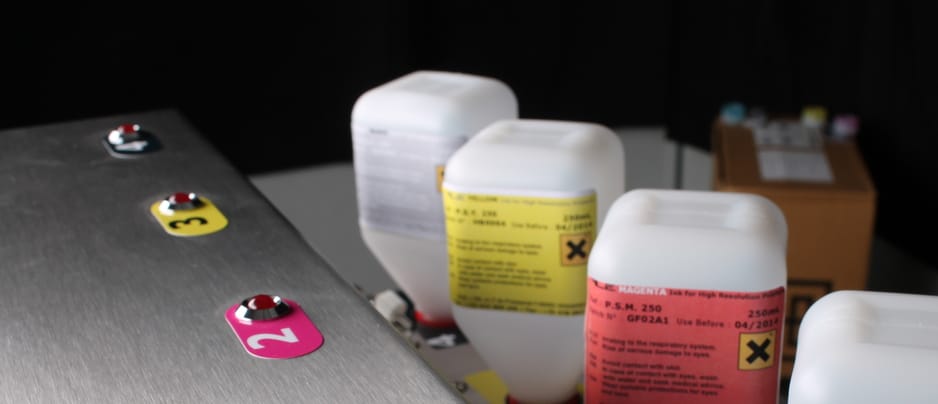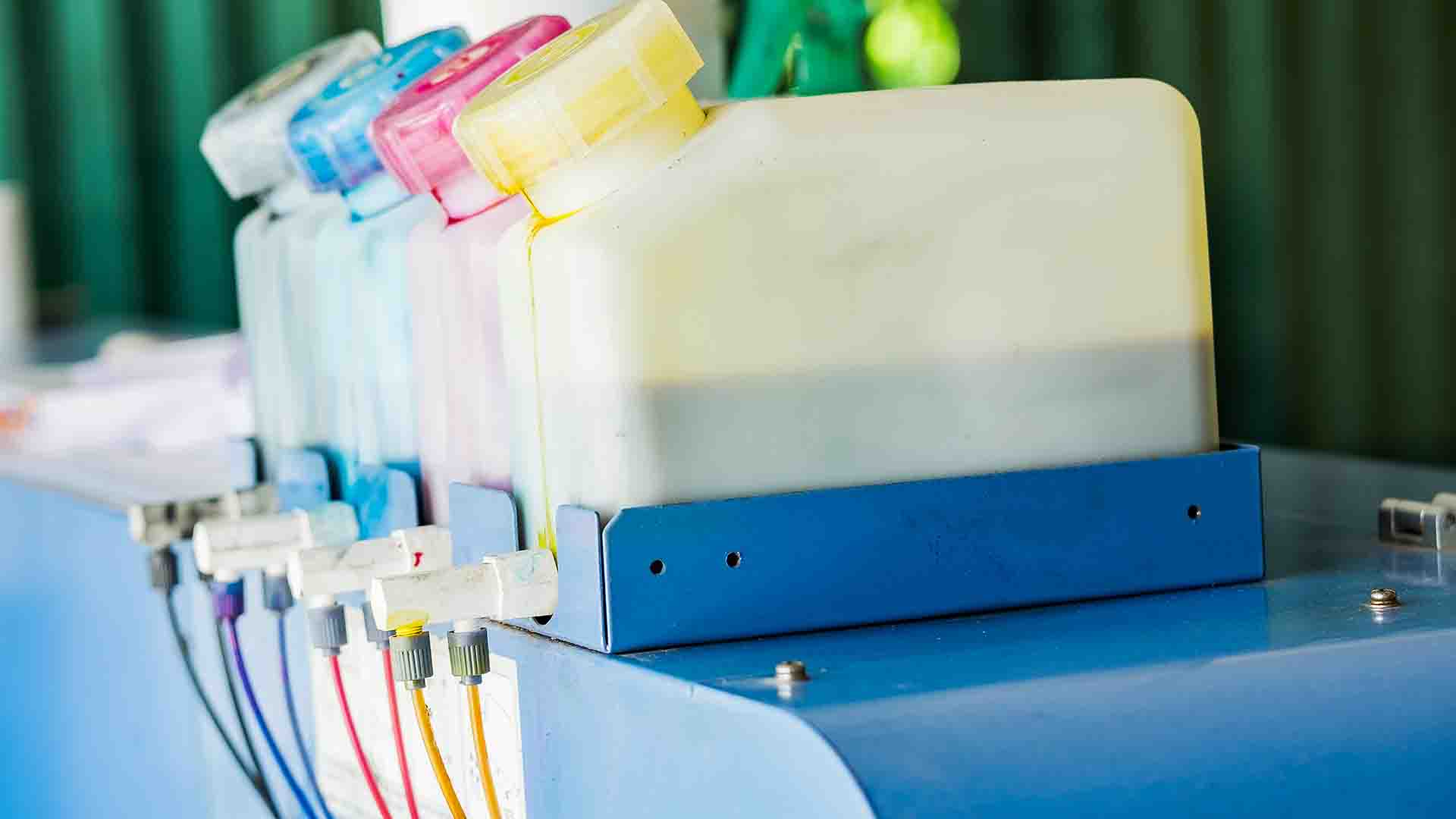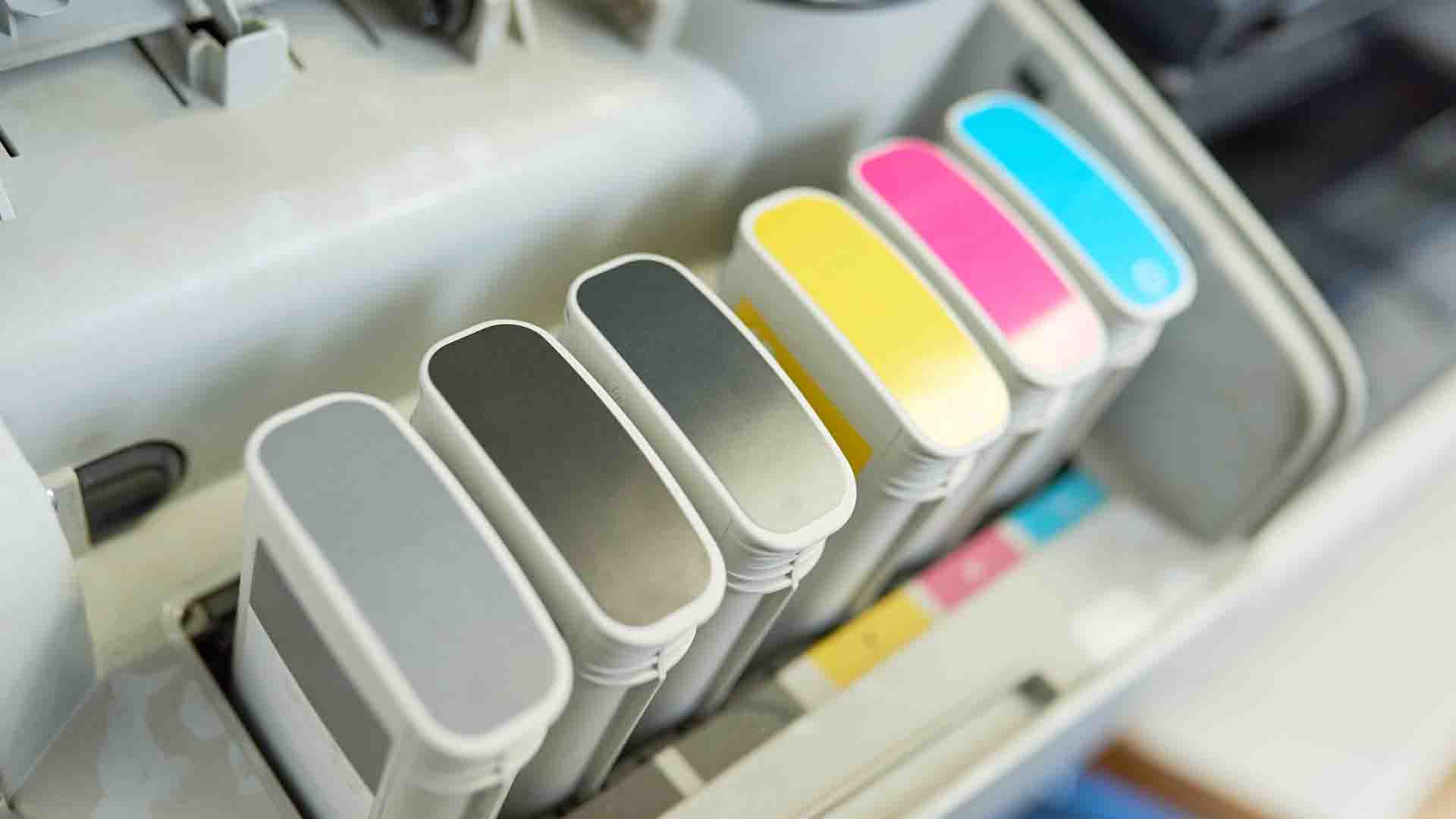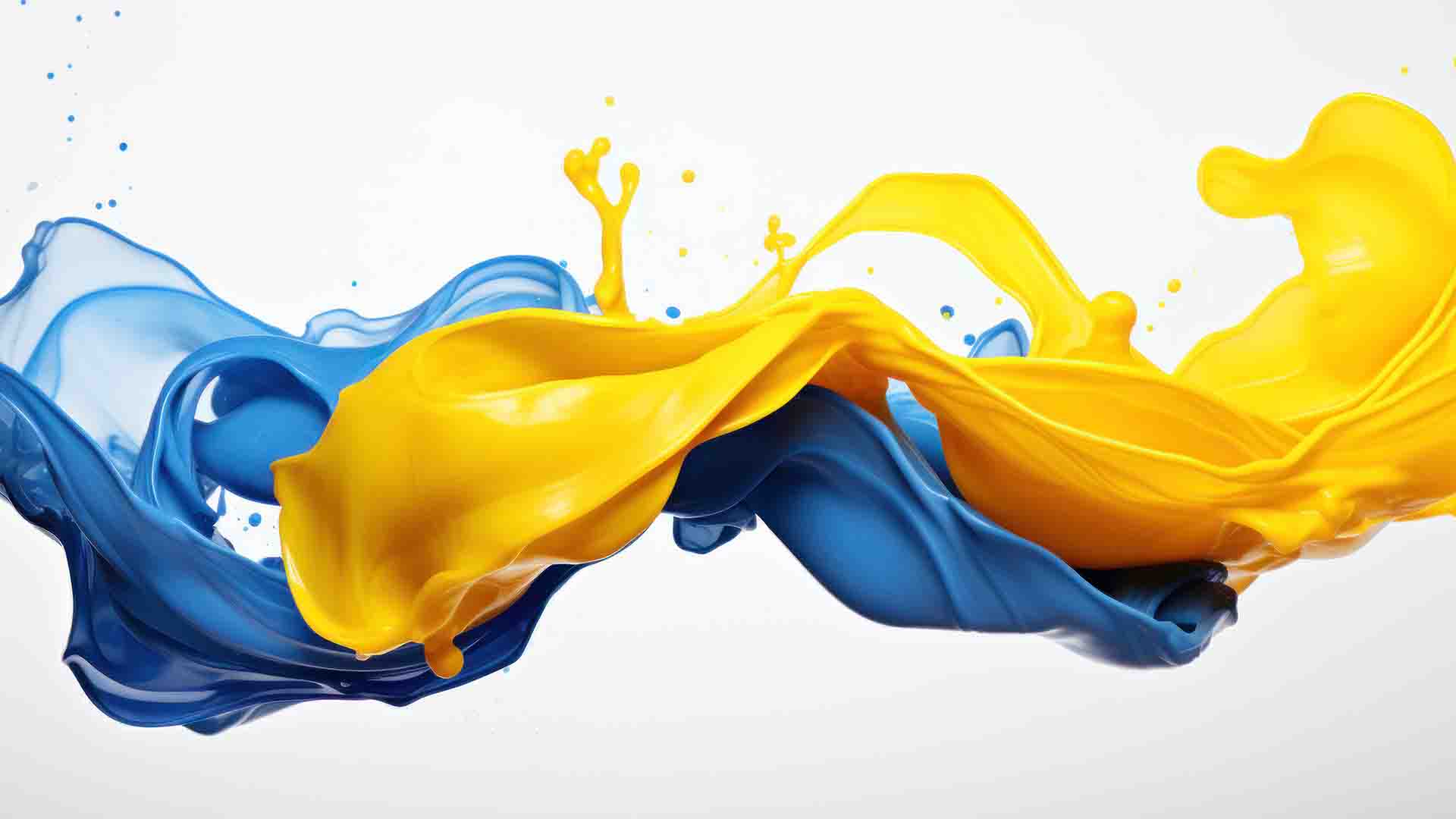


When labelling is the last step before the product is shipped, it is the ink that determines whether the code will be clear, legible and last throughout the product’s “journey”. That’s why we don’t go for ‘cheapest’ first, but rather for what’s right for your surface, speed and environment – avoiding reprints, returns and unnecessary downtime.
What are industrial printers and why the right inks are important
Several types of marking printers are used in production: thermal cartridge-based thermal inkjet (TIJ), continuous inkjet (CIJ) technology for high speeds, drop-on-demand (DOD/pieso) for larger symbols on boxes, and UV-curable inkjet systems for instant “lock-up” on smooth surfaces. Each type “likes” its own chemistry: TIJ is more often working with water or solvent-based cartridges, CIJ with fast-drying solvent mixtures (white/yellow pigment versions are also available), DOD with water, solvent or UV inks. The right ink means sharp outlines, consistent legibility and no dramatic maintenance.
Briefly: water-based for porous surfaces (cardboard, paper), solvent-based for smooth surfaces (plastics, glass, metal) and high speeds, UV-cured for instant curing and high resistance on non-porous substrates. In Lithuania, manufacturers and suppliers offer all of these areas, from cost-effective solutions for boxes to specialised compounds for plastics or metal.
Nes mes ne tik tiekiame įrangą ar siūlome sprendimus – mes kuriame vertę, kurią jaučia Jūsų verslas kiekviename žingsnyje.
UAB „Vygėja“ – tai patikimas partneris, kuriam rūpi ne tik rezultatas, bet ir Jūsų kelias link jo.
Water-based paints – where they are used and their benefits
If you print on cardboard, paper boxes or label substrates, water-based inks offer a clean, odourless solution. They absorb quickly, give a sharp outline and don’t add to the VOC load in the shop. With TIJ, it’s especially convenient: the cartridge sets up in seconds, the print is crisp and maintenance is minimal. Water-based inks are also ideal for labelling pallets, trays and other porous packaging, where extreme resistance to washing or grease is not required.
Solvent-based paints – moisture, grease and abrasion resistance
Smooth surfaces – film, PP/PE/PET, lacquered tin, glass – require the sign to “lock” within seconds. Solvent-based mixtures are used: ethanol, MEK or acetone carriers evaporate quickly, and the binder adheres securely even on moving products. If the substrate is dark or transparent, pigmented inks (e.g. white or yellow) are used to give contrast to the code. Such mixtures are widely used in the beverage, chemical and cosmetic chains where speed and reliability are needed on smooth coatings.

UV paints – instant drying and high resistance
UV-curable inks cure immediately after exposure to the UV LED/lamp, making the code instantly resistant to abrasion and moisture – no need for a separate drying area, high-speed operation and marking on many unpaired surfaces. This trend is popular where instant availability and high resolution are important (small 2D codes on films, lacquer boxes), as well as for small products and components.
Specialised paints on metal, plastic, glass and other smooth surfaces
Different surfaces require different formulations. On plastics, pigmented solvent blends are often needed for contrast or UV-curable solutions for fine, fast-ready code. On metal and can lids, in addition to solvent solutions, white/yellow pigment versions are used to make the mark visible. Solvent inks are used for glass in the beverage sector and washable mixtures for reusable containers, which hold up to the wash and disappear reliably there. Temperature sensitive (thermochromic) and low migration inks are also available on the market, where appropriate properties are required for a specific process.
Paints for the food and pharmaceutical sector: certified and safe for contact
In these areas, we value the simple things: odourless operation, stable readability and compatibility with packaging. Water-based solutions work reliably on paper liners and boxes; fast-drying solvent blends on films, lids and glass surfaces, or UV for instant preparation. If you’re working with reusable containers or sterilisation cycles, we’ll select washable or enhanced-resistance options and demonstrate how they hold up on your materials – what matters most is that the code remains readable from the first scan to the last day in real life.

High speeds require two things: a chemistry that clicks instantly, and a printer that transmits it stably. CIJ solvent-based inks are the industry standard when bottles, cans or extruded products move without stopping; UV-curable inks make it possible to do away with drying stations on films and lacquered boxes altogether. The result is clean, crisp code with no “spillage” and no additional repositioning.
Pigmented or dye-based industrial inks for printers? How not to make a mistake with contrast
The inkjet black inks provide very black optical density on porous surfaces and are ideal for text and 1D/2D codes on cardboard. Pigmented inks (e.g. white, yellow) are indispensable on dark or transparent surfaces, forming a coated, contrasting layer rather than “soaking in”. If you are changing product colours or coatings, keep a pigment cartridge handy so you don’t have to “rescue” your mark by enlarging fonts or slowing down the line.
How to quickly choose inks for wide format printers
Answer three questions for yourself. Surface: porous (cardboard/paper) – choose water-based; smooth (PP/PE/PET, glass, metal) – solvent-based or UV. Speed: high – CIJ with fast-drying solvents or UV curing; medium – TIJ/DOD with appropriate chemistry. Durability: if moisture, grease, abrasion will be present – solvent-based or UV preferred; if you are labelling, thermal transfer with resin ribbon (especially on PP/PET) usually gives maximum durability. And below, a test print on your packaging to see the real picture, not the theory.
